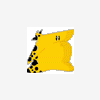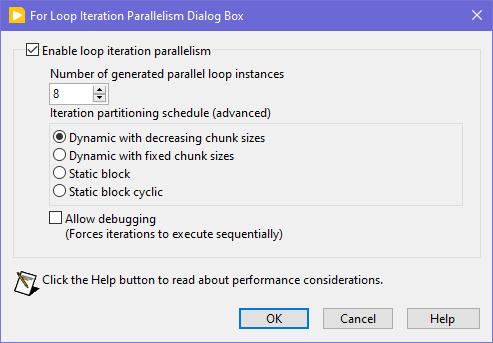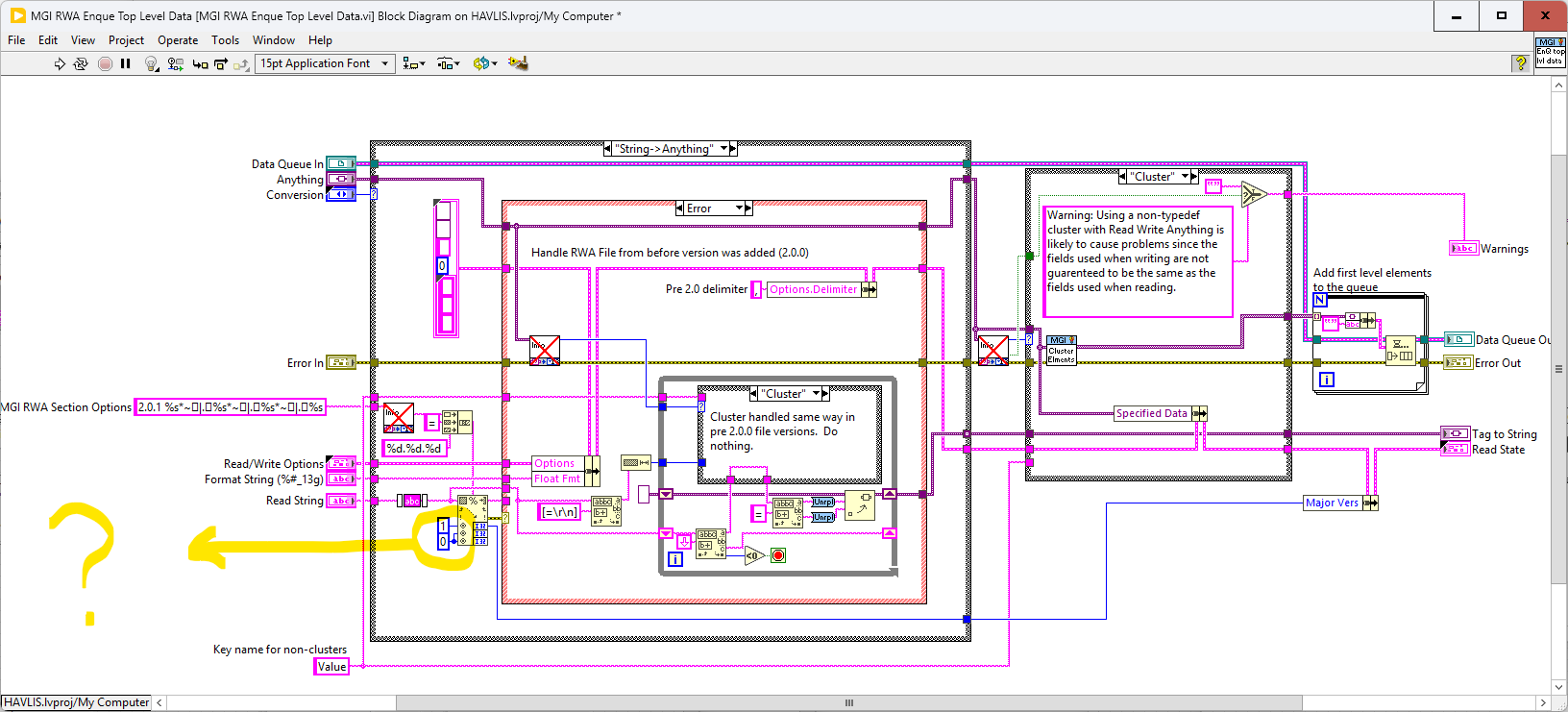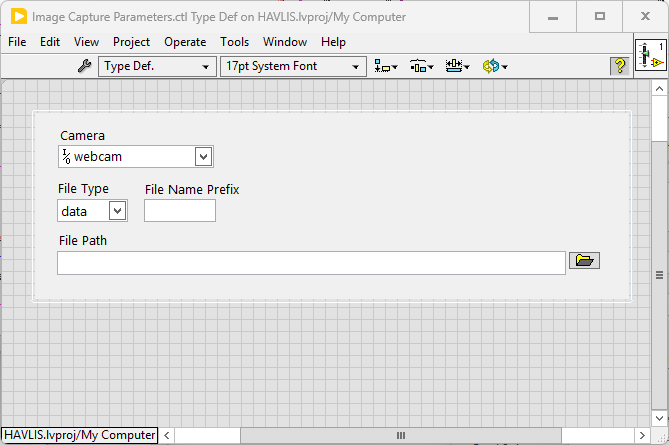All Activity
- Past hour
-
LabVIEW 5 is almost 30 years old! It won't run on any modern computer very well if at all. Besides offering software even if that old like this is not just maybe illegal but definitely. So keep browsing your Russian crack sites but leave your offerings away from this site, please!
- Today
-
Necesito usar cwui.ocx en visual basic 6 alguien sabe usarlo
javierw replied to javierw's topic in LabVIEW General
Hola abro visual basic 6 uso cwui.ocx pero me sale mensaje a los 5 minutos de limite de uso como hago para usar cwui.ocx y que no me genere ese bloqueo -
Necesito usar cwui.ocx en visual basic 6 alguien sabe usarlo
javierw replied to javierw's topic in LabVIEW General
-
Tengo labview 5 alguien lo necesita, lo comparto
-
Necesito measurement studio que venia con labview 5 alguien lo tiene?
-
Hola amigos soy de Colombia y entusiasta de labview como lo son ustedes, en mis cosas debo tener el labview 5 full si están interesados lo compartiría, pero creo que acá por cosas de derechos no se puede quedar atento y lo busco y lo comparto, lo encontré en una página rusa hace un tiempo y esta full, quedo atento, además tengo información de cwui.ocx con visual basic 6.0 lo estoy usando y también lo tengo
-
javierw joined the community
- Yesterday
-
Seems like this one has "escaped everyone's grasp" too. ParallelLoop.ShowAllSchedules=True Because was only checked from the password-protected diagram of ParallelForLoopDialog.vi (LabVIEW 20xx\resource\dialog). Present since LabVIEW 2010. When activated, allows to apply more advanced iteration partitioning schedule. In other words, instead of this you will get this Сould this be useful? I can't say. Maybe in some very specific use-cases. In my quick tests I didn't manage to get increase in any productivity. It's easy to mess up with those options and make things worse, than by default. Also can be changed by this scripting counterpart.
- Last week
-
This is true. But! If the VI to open is a member of a lvclass or lvlib and the typedefs input is False (default value), then almost any subsequent action on that VI ref leads to the whole hierarchy loading into memory. This is not good in most cases as with large hierarchies loading takes several seconds and LabVIEW displays loading window during that, no matter which options are passed. The only easy way to escape that is to set the typedefs to True. Another option would be putting the VI in a bad (broken) state, but the function suitable for this is not exported. Frankly this Open.VI Without Refees method acts a bit odd, because when the typedefs is False, it sets the viBadVILibrary flag, but it does not give the desired effect, but when the typedefs is True, such a flag is not set, but no dependencies are loaded. Sometimes I use Open.VI Without Refees to scan VIs for some objects on their BD's / FP's and when there are thousands of VIs, it all takes many minutes to scan, even with the typedefs = True. I managed to speed things up 3-4 times by compiling my traversal VI and running it on a Full Featured RTE instead of a standard RTE to get the scripting working. Using that ~20 000 VIs are scanned in about 5 minutes.
-

LabVIEWs response time during editing becomes so long
Rolf Kalbermatter replied to MikaelH's topic in LabVIEW General
Wow, over 2 hours build time sounds excessive. My own packages are of course not nearly as complex but with my simplistic clone of the OpenG Package Builder it takes me seconds to build the package and a little longer when I run the OpenG Builder relinking step for pre/postfixing VI names and building everything into a target distribution hierarchy beforehand. Was planning for a long time to integrate that Builder relink step directly into the Package Builder but it's a non-trivial task and would need some serious love to do it right. I agree that we were not exactly talking about the same reason for lots of VI wrappers although it is very much related to it. Making direct calls into a library like OpenSSL through Call Library Nodes, which really is a collection of several rather different paradigms that have grown over the course of over 30 years of development, is not just a pain in the a* but a royal suffering. And it still stands for me, solving that once in C code to provide a much more simple and uniform API across platforms to call from LabVIEW is not easy, but it eases a lot of that pain. It's in the end a tradeoff of course. Suffering in the LabVIEW layer to create lots of complex wrappers that end up often to be different per platform (calling convention, subtle differences in parameter types, etc) or writing fairly complex multiplatform C code and having to compile it into a shared library for every platform/bitness you want to support. It's both hard and it's about which hard you choose. And depending on personal preferences one hard may feel harder than the other. -

LabVIEWs response time during editing becomes so long
ShaunR replied to MikaelH's topic in LabVIEW General
I think, maybe, we are talking about different things. Exposing the myriad of OpenSSL library interfaces using CLFN's is not the same thing that you are describing. While multiple individual calls can be wrapped into a single wrapper function to be called by a CLFN (create a CTX, set it to a client, add the certificate store, add the bios then expose that as "InitClient" in a wrapper ... say). That is different to what you are describing and I would make a different argument. I would, maybe, agree that a wrapper dynamic library would be useful for Linux but on Windows it's not really warranted. The issue I found with Linux was that the LabVIEW CLFN could not reliably load local libraries in the application directory in preference over global ones and global/local CTX instances were often sticky and confused. A C wrapper should be able to overcome that but I'm not relisting all the OpenSSL function calls in a wrapper. However. The biggest issue with number of VI's overall isn't to wrap or not, it's build times and package creation times. It takes VIPM 2 hours to create an ECL package and I had to hack the underlying VIPM oglib library to do it that quickly. Once the package is built, however, it's not a problem. Installation with mass compile only takes a couple of minutes and impact on the users' build times is minimal. -
egeoktay joined the community
-

LabVIEWs response time during editing becomes so long
Rolf Kalbermatter replied to MikaelH's topic in LabVIEW General
Actually it can be. But requires undocumented features. Using things like EDVR or Variants directly in the C code can immensely reduce the amount of DLL wrappers you need to make. Yes it makes the C code wrapper more complicated and is a serious effort to develop, but that is a one time effort. The main concern is that since it is undocumented it may break in future LabVIEW versions for a number of reason, including NI trying to sabotage your toolkit (which I have no reason to believe they would want to do, but it is a risk nevertheless). -
WonyongKim joined the community
-
daniel_v10 joined the community
- Earlier
-
xc123 joined the community
-
JNewton joined the community
-
yao111 joined the community
-
CooperW started following Preventing Windows going to Lock screen
-
CooperW joined the community
-
Eva5589 joined the community
-
For Libre/openOffice:
-
En voyant le code, il me semble qu'il a été écrit pour lire un fichier csv, et il ne peut pas lire un fichier xls(x). Si tu dis que ça marchait avant et que ça ne marche plus maintenant sans avoir changé le code, peut être as tu ouvert le fichier csv avec Excel et sauvé en xls(x)? Vérifie le format de ton fichier, et le chemin du fichier lu par le logiciel. Ensuite, si tu veux lire des données dans un fichier xls(x) au lieu de csv, il y a plusieurs méthodes, chacune a ses avantages et inconvénients.. - activeX, Windows only, nécessite Excel installé sur la machine - pandas, multi plateforme, nécessite python et pandas installé - vi de Darren (voir forum NI), ne marche pas avec toutes les versions d'excel, multi-platform Bon courage !
-
I haven't had much time to investigate this until this month, but I think I've found the cause. XNodes on the production computer were not designed optimally. In the AdaptToInputs ability I was unconditionally passing a GenerateCode reply, thinking that the AdaptToInputs is only called when interacting with the XNode (connecting/disconnecting wires). It turned out that LabVIEW also calls the AdaptToInputs ability once, when the VIs are loaded and any single change is made, no matter if it touches the XNode or not. As I had many such non-optimal XNodes in many places, it was causing code regeneration in all of them. Besides of that some of my VIs had very high code complexity (11 to 13), because of a bunch of nested structures. When the XNodes regeneration was occurring simultaneously with the VIs recompilation, it was taking that a minute or so. After I added extra conditions into my AdaptToInputs ability (issue a GenerateCode reply only, when the Term Types are changed), the edits in my VIs started to take 1.5 seconds. Still the hierarchy saves can be slow, when some 'heavy' VIs are changed, but it's a task for me to refactor those VIs, so their complexity could decrease to 10 or less. By the way, my example from the previous page was not suitable for demonstrating the situation, as its code complexity is low and the Match Regular Expression XNode does not issue a GenerateCode reply in the AdaptToInputs.
-
viSci started following MGI RWA Version Issue
-
Noticed that MGI RWA does not seem to work when clusters contain things like IMAQdx refnums. Seems like the default Major Vers will always be 1 which is incorrect and causes conversion back to variant problems downstream. When I changed the default of the Scan String first parameter to 2 then it works fine. This is my cluster that I am trying to work with. The problem occurs with the IMAQdx refnum control.
-

LabVIEWs response time during editing becomes so long
ShaunR replied to MikaelH's topic in LabVIEW General
Yes. But not a good enough reason. -

LabVIEWs response time during editing becomes so long
Rolf Kalbermatter replied to MikaelH's topic in LabVIEW General
Well, if you stick to strict OOP principles, modularizing it through plugin mechanism and similar should be fairly easy to do! It takes a bit of time to create the necessary plugin mechanisms and requires about at least 3 iterations before you end up with something that really works but that is still magnitudes easier than waiting on a 18k VI project to load every time and fall asleep between edit operations. That's one more reason why I usually have a wrapper shared library that adapts the original shared library interface impedance to the LabVIEW Call Library Interface impedance. 😀 -

LabVIEWs response time during editing becomes so long
ShaunR replied to MikaelH's topic in LabVIEW General
You may say that but ECL alone is about 1400 Vi's. If each DLL export is a VI then realising the entire export table of some DLLs can create hundreds of VI's, alone. However. I think that probably the OP's project is OOP. Inheritance and composition exponentially balloon the number of VI's - especially if you stick to strict OOP principles. -
Rolf Kalbermatter started following LabVIEWs response time during editing becomes so long
-

LabVIEWs response time during editing becomes so long
Rolf Kalbermatter replied to MikaelH's topic in LabVIEW General
One thing I have seen in the past running really havoc with the LabVIEW editor and/or compiler were circular dependencies. Very easy to end up with even in moderately sized projects if one uses globals. Absolutely unavoidable without a proper design and avoiding globals almost entirely, except in very carefully chosen places, for large projects. The LabVIEW editor/precompiler does pretty much a full pass over the internal data graph for every edit operation. With circular dependencies the graph gets effectively infinite in length and while the system has checks in place to detect such circular references and abort the parsing at some point, it seems not able to do that safely just on the first occurrence without missing some paths, so goes on longer than is most of the times necessary. First sign usually shows up as frequent inability to build the project without obscure errors, especially for realtime targets. Things go ok much longer for builds on Windows, but drop the project code into a realtime target and builds and/or deploys will cause all kind of hard to explain errors. A 18k VI project! That's definitely a project having grown out into a mega pronto dinosaur monster. I can't imagine to even consider creating such a beast. My biggest projects were probably somewhere around 5000 and that was already getting very painful to do any work on. And caused me to modularize it eventually, with parts moved into realtime targets. The cost for the additional hardware were actually smaller than the time lost keep trying to get the monster to build and work, despite that NI realtime hardware is anything but cheap. But I inherited in the long ago past a project that consisted only of maybe 100 VIs. However it consisted of a main VI that was something like 15MB in size (the other VIs were mostly just simple accessors to drivers and ... shudder ... several dozen global variables), with the main VI being one huge loop with sequence structures inside case structures, inside loops, inside more sequence structures, inside even more case structures and loops and this continued for a few more levels like that. Not one shift register, everything was put in globals and written and read back 100ds of times. Editing that VI was a painful exercise, select a wire or node, wait 5 seconds, move the wire or node, wait 5 seconds ... . I have no idea how the original developer ever got this to that point without going insane, but more likely he was insane to begin with already. 😀 I was several days busy to just get the diagram a bit cleaned up by adding some shift registers to manage the actual data more efficiently, identify common code constructs that appeared all over the place over and over and place them into subVIs, and get everything to a state that was reasonably workable before I could really go and refactor that application. In the end I had maybe 500 or so VIs and a main VI that was well below 1MB with a proper state machine and almost no sequence structures anymore. And it run reliably and when you pushed the stop button you did not have to wait half an eternity before the application was able to detect that. The biggest irony was that the application actually was working with an enum state with some 100 or more states, maintained in a global and in almost every sequence frame there was a case structure that would have one or a few cases for a specific state and a default that was doing pretty much nothing. It was a state machine turned inside out and then put into a cascade of sequences! -
Libre Office/Open Office is an open source implementation of an Office suite of applications. It delivers similar application as the Microsoft Office package and they work in many ways similar but are not the same. If you are a seasoned Excel, Word or whatever user, they require a little bit of relearning and getting used to. They support a 3rd party interface similar to the Microsoft Office Active X interface but it's not the same and will not work with the Report Generation Toolkit (RPT). One would need to write extra RPT plugins for that, except that while NI made the RPT plugin based, they kind of borked the instantiation of plugins by not making it easily extendable. The available plugins are hardwired in the implementation and extending that would require modifications to the NI implementation, which is considered by most developers a no go as you have to modify the Toolkit on every installation and reapply the modification anytime the Toolkit is reinstalled/updated by NI, which might or might not break your modifications too.
-

LabVIEWs response time during editing becomes so long
ShaunR replied to MikaelH's topic in LabVIEW General
Ooooh. What have you been doing with the icon editor? -

LabVIEWs response time during editing becomes so long
crossrulz replied to MikaelH's topic in LabVIEW General
Yes, decoupling is a long process. I have been trying to do that with the Icon Editor. Not trying right now as other priorities with that project are more important. Do the process slowly and make deliberate efforts. You will eventually see the benefits. -

LabVIEWs response time during editing becomes so long
Thomas Robertson replied to MikaelH's topic in LabVIEW General
After consulting some co-workers I reverted recent changes to my project and now everything is fast again. They reported similar observations when they had similar problems. Our theory is that as things change something in the project gets out of whack, maybe it's sense of dependencies I don't know and gets saved into the project file. Anyway, I'm back to normal speed editing. As to breaking apart the 18K vi project, we've discussed it for a decade now. We have plans to try to decouple one part of the code from the rest because it seems to be a major culprit for why everything relies on everything else. But, this decoupling effort feels like trying to boil the ocean. We're dealing with a 30 year old code base and lots of the communication and subvi calling was defined long before there were libraries and public private concepts. If we can ever get them more isoltated we might consider PPL's. I feel like those had issues with cross platform compatibility (Windows/Mac) though. -

LabVIEWs response time during editing becomes so long
Softball replied to MikaelH's topic in LabVIEW General
Hi again The topic has been discussed in the past and is even mentioned in the manual : Discussion ( even AQ was active then in 2016 ) : https://forums.ni.com/t5/LabVIEW/Compiler-optimisations-and-IPE/m-p/3302614 Manual : https://www.ni.com/docs/en-US/bundle/labview/page/choosing-between-editor-responsiveness-and-vi-execution-speed.html My story about a slow editing experience and what was done over time may help others to either avoid creating large systems, or stick with LabVIEW versions that can handle that. Regards








.thumb.jpg.5d2ee2fea691c9fe3fab4270ba8e531d.jpg)

